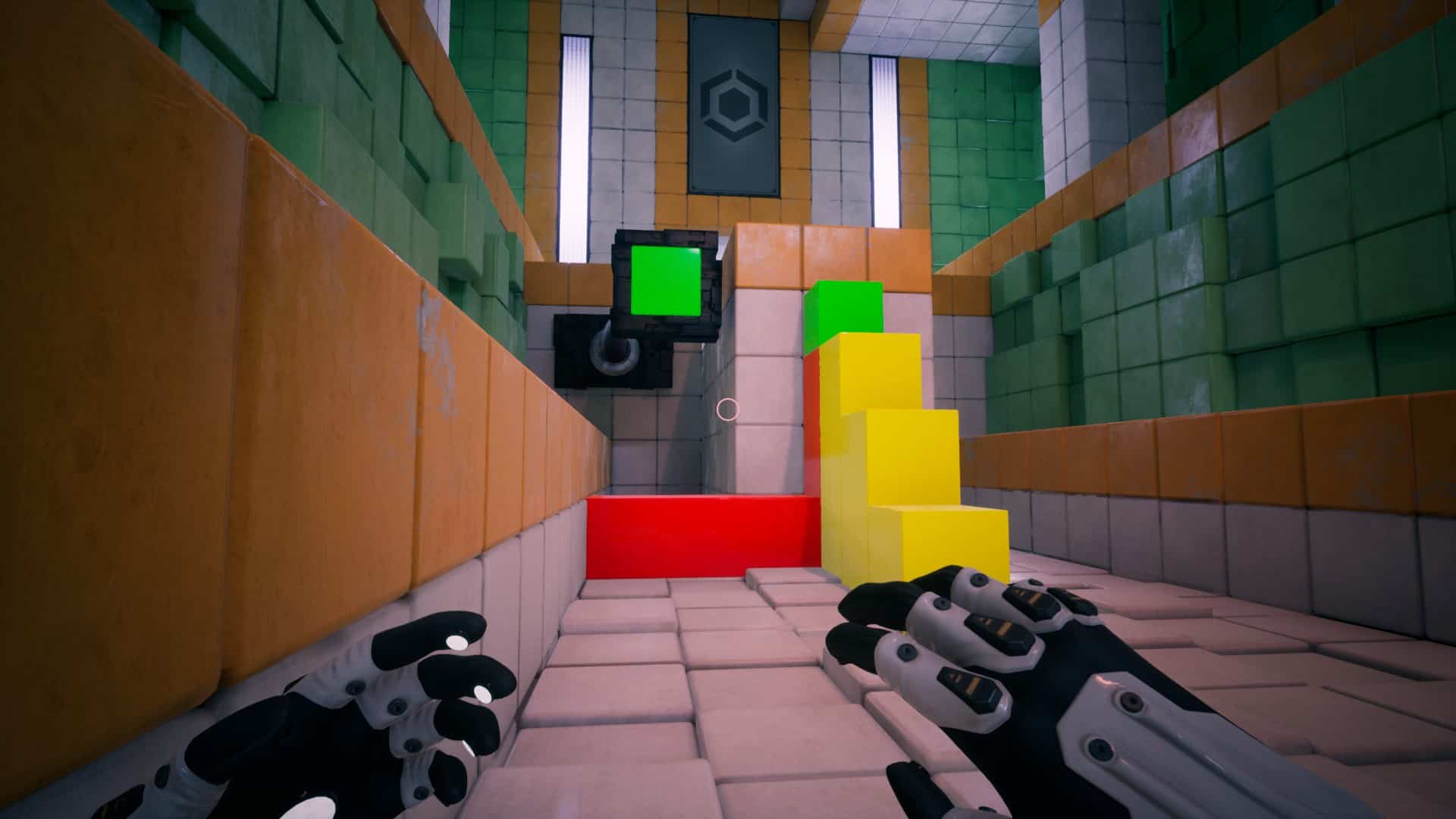Toxic Games has given puzzle fanatics another banger in Q.U.B.E. Celebrating its 10th anniversary, we’ve been treated to both the original and the Director’s Cut version in one game. The textures are eye-candy, and I could imagine this looking like Minecraft on steroids. In this Q.U.B.E. review, we played around with the Director’s Cut version, and here’s what I experienced playing inside this wild block maze.
Story
The premise of Q.U.B.E. is that you are a test subject stuck inside a big room filled with puzzles and these rooms become more complex the more sectors that you clear.

You’ll be listening to radio conversations from mysterious people while uncovering why you’re stuck in this crazy loop solving mind-boggling puzzles.
Graphics & Audio
Inside this block maze, we can see how much the presentation has evolved with Q.U.B.E. 10th Anniversary Edition. After looking at the game’s comparison trailer, we can see a drastic improvement in how much color and textures they’ve added, making Q.U.B.E. more immersive.

The atmospheric soundtrack also brought the game to life. There were even some instances when I felt a bit uneasy, and the great sound design added to that. Q.U.B.E. would sometimes feel like a thriller whenever you get radio contact or when you’re about to discover a new room.
It’s actually a joy listening to the conversations that kept me hooked while exploring. I thought the voice actors did an excellent job in delivering the dialogues.
So Q.U.B.E. nailed that balance between storyline and gameplay mechanics. At the same time, it didn’t give me that dull, repetitive environment and made me curious about what lies ahead.

Graphically speaking, Q.U.B.E. is pretty well optimized in its state and I didn’t encounter any graphical issues. In fact, I was playing this with Epic settings on my GTX 1060 laptop, and it ran smoothly.
Level Design
The environment of Q.U.B.E. and its level designs didn’t feel bland at all even after hours of playing the game. However, there will be times that you’ll feel super frustrated because you can’t advance to the next room and are stuck with the same imagery. I felt like I was inside a complicated Rubik’s cube with no way out.

Each sector has its own theme. I like the way the levels are stitched in such a way that it doesn’t look forced. Adding in the voice dialogues while you’re exploring the cube maze enhanced immersion, and you aren’t just solving puzzles.

Cube Types
What’s unique about this Q.U.B.E. review is the different colored blocks that you can interact with using your gloves, along with the other obstacles that come your way.

For example, you can grow or shrink a red block, and some series of yellow blocks can turn into staircases for you to climb up. Stepping on a blue block can bounce you up while, at the same time, it can also be a platform for you to stand on, depending on the circumstances.
There are even scenarios where you’ll control black light boxes through magnets, adding more difficulty to some puzzles.
Some cubes are immovable, and the only way to make them move is to manipulate the other cubes surrounding your area. These are just some of the obstacles we’ve mentioned, and there are a lot of challenges for you to discover.
Gameplay
The last puzzle game I played was the Portal series. Q.U.B.E. just brought me the same vibes as Valve’s popular sci-fi puzzle title. I didn’t see any annoying issues with the gameplay as I felt the movement and animations were smooth.

Some puzzles can be a bit frustrating though. There might be times that you’ll brute force your way into figuring out a solution and advance to the next room. No hint will help in case you get stuck (at least from my playthrough).
For the challenged types, this will come as an enjoyable gaming experience. However, if you’re like me, who can’t grind for long hours in solving plenty of puzzles in a single run, it’s gonna be a headache.
The Verdict
Frustrations aside, I felt the box immersion hooked me while playing this underrated title. Q.U.B.E. has dramatically improved in terms of next-gen graphics and some slight storytelling, and its 10th-anniversary edition is definitely a puzzle worth playing.

I just wish it had some feature that would introduce some procedural-generating puzzles anytime soon if Q.U.B.E. wants to explore the replayability route. But then again, the game’s content is enough for a problem-solving marathon.
We hope you enjoyed reading our Q.U.B.E. review. Take a look at our other reviews if you’re undecided if you should add some games to your collection.











